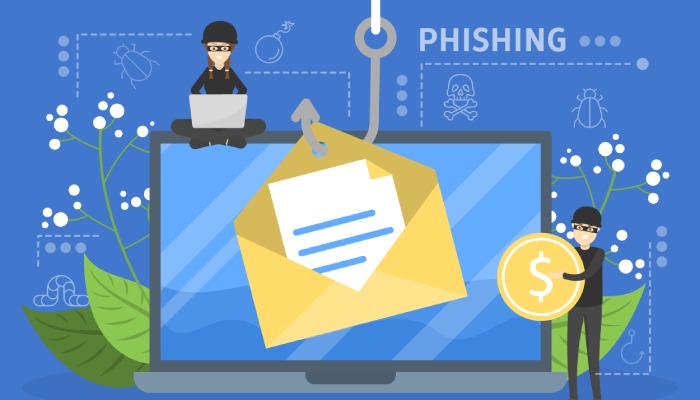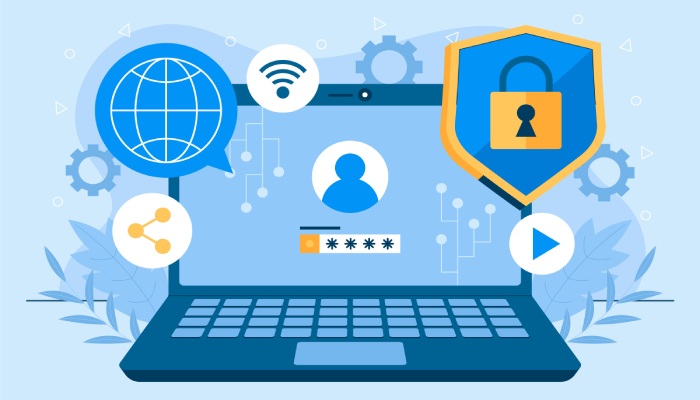$5.3 billion – this is the FBI’s estimate of the total losses in the last three years suffered by businesses around the world to phishing attacks. Understandably, phishing is a severe crime in the cyber world. These cyber-attacks are successful because people fall prey to them very quickly, through spoofed emails. It’s not as easy as it sounds to protect from phishing since the attackers are nowadays using new and ingenious technologies.
What Are Phishing And Spoofing?
We often use the terms ‘phishing’ and ‘spoofing’ as synonymous to each other. Though they are quite similar, they have some differences.
Phishing is the act of impersonating legitimate organizations and sending emails in their name to illegally gain access to others’ sensitive information like financial details, social security numbers, and other login credentials. These emails typically redirect to or contain links to fake websites operated by the scammers. The user is required to enter important account information on these websites, which the attackers then use to gain illegal control over the user or his assets.
Similar to phishing, a spoofing attack usually starts with emails. The emails contain subtle threats, like “We noticed unusual activities on your so-and-so account. If you don’t confirm these activities, your account will be blocked”. The receiver of this message usually wants to take necessary actions and will click on links provided in the emails to do so. Clicking on these links do nothing but executing malicious files that attack the user’s system.
How Are Phishing And Spoofing Done?
These attacks are carried out through various methods; however, one of the common ways is by sending unsolicited emails to the employees of an enterprise or organization and lure them to click on the links provided in the messages. These links redirect to unknown websites that usually demand personal information such as credit/debit card information, your name, bank account details, social security numbers, etc. These websites may look like those of the legitimate organizations the phishers are impersonating. Such official-looking sites encourage unsuspecting users to give their information and credentials confidently.
Some of the emails (like in case of spoofing) have malicious attachments like Trojan malware which, when downloaded, infect the computer files, look for confidential data and transfer that to the remote server of adversaries, thus putting at significant risk not only the hacked organization, but all their associates and clients as well.
Hackers nowadays even blackmail the receivers and ask for ransom, which is quite similar to ransomware attacks. They use the critical and sensitive information they have of the target and their associates to blackmail, successfully so in many situations.
Internet is the birth of phishing of scams. With the inception of the internet, phishers came into the picture to steal or to perform these kinds of cyber-crimes.
Often, these adversaries target organizations to access their data, using emails with malicious attachments or through call/SMS phishing. Any person who has authority to access the critical data stored in the organization’s database servers is chosen as the target, in the phishers’ world, they call them “Whales” and are prime targets.
How To Prevent Falling Prey To Phishing Or Spoofing Attacks
Phishing scams can be avoided, if not completely halted, through the practice of some guidelines and with awareness training which organizations need to set up for their employees. Let’s discuss some of them here.
Stay updated about phishing techniques
Phishers are developing new methods to perform these attacks every day. An enterprise may fall prey to the scams if these new ways are not detected and countermeasures put in place. To track their methodologies, enterprises need to have their eyes wide open for the recent attacks and analyze them to formulate the best possible safeguards. In this way, you will be at lower risk of getting caught in one of these scams. IT administrators need to train their employees based on their designation by calculating the risk factor for each one of them. Hackers often research about the target and their personal information through social media networks in advance of getting into action.
Analyze before clicking
Employees in organizations receive multiple emails, and clicking on the links from trusted sources is perfectly fine. However, think before you click on the emails received from unknown sources, random emails, or instant messages. IT geeks advise hovering over the links and verifying whether the URL displayed is identical to the link given. In reality, hackers lure targets with some links which look legitimate, but these links will land on web pages that have different URLs altogether.
Anti Phishing toolbar: a must have software
Almost all internet browsers can be customized with anti-phishing toolbars. These toolbars take care of every website you visit and check for the blacklisted sites in their database. If they stumble upon one of those phishing websites, the toolbars notify you with the warning messages. An anti-phishing toolbar acts as a first layer of protection from phishing scams. Also, browsers offer this function for free.
Check for security certificate of webpages
Be cautious before supplying confidential financial data online; check for the site URL, it should start from “https,” and there should be a padlock icon at the beginning of the address bar. The lock symbol is the sign of SSL certified websites, which are entirely secure web pages.
Some search engine pages also show flashy images, some of which may be adware and can lead to destructive pages. Hence, avoid clicking on these unless necessary.
Firewalls: best protection suite
A firewall works as a security layer between the user and the hackers; thus, high-quality firewalls are useful and beneficial for prevention from phishing scams. Firewalls are of two types: software and hardware firewalls, one is for desktop protection, and the other is for network protection.
The Final Words
Keep in mind that there are no single, one-size-fits-all means of protection from these scams. Be vigilant, stay updated, and stay safe.


